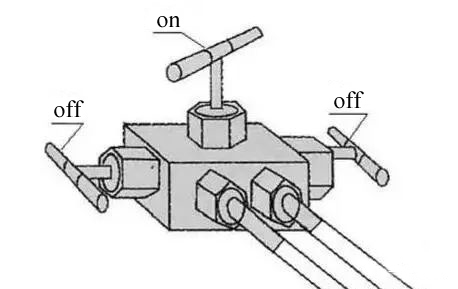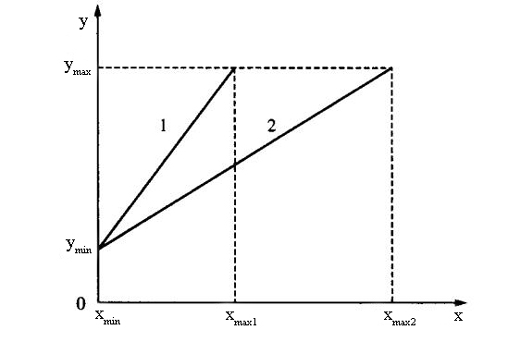Differential Pressure Transducer Calibration
The calibration for the differential pressure transducer mainly includes range adjustment and zero migration. To ensure the normal operation of the differential pressure transducer and the accuracy of differential pressure and flow measurement, users need to periodically check and calibrate it. The differential pressure transducer has a positive pressure terminal and a negative pressure terminal. In general, the pressure at the positive pressure terminal should be greater than the pressure at the negative pressure terminal so that the measurement can be performed normally. In the actual calibration process, users often mistake that the range of the differential pressure transducer can be changed by the HART communicator, and the zero point and the range adjustment can be performed without inputting the pressure source. In fact, this method only sets the range and does not meet the calibration purpose. The correct calibration should be to use the standard instrument for zero and range calibration in the case of external force, and carry out the necessary range migration according to the actual working conditions on site.

First, open the balancing valve of the differential pressure transducer. Then close the two shut-off valves. In this way, the differential pressure transducer can be calibrated. Take the ATO-PRES-2051 differential pressure transducer as an example to introduce the zero adjustment for the differential pressure transducer. Loosen the screws on the differential pressure transducer housing to expose the zero adjustment button. Note that there are two buttons, one for the zero adjustment button (ZE-RO) and the other for the default setting restoring button (SPAN). Pressurize the differential pressure transducer. When the pressure is applied to 4 mA, output the corresponding pressure value. Press the zero adjustment button 2s to check if the output is 4mA. The pressure transducer with a head will display ZEROPASS.
2. Range adjustment and zero migration for differential pressure transducer


Zero positive and negative migration refers to the adjustable range of the differential pressure transducer zero point, but it is different from the zero point adjustment. Zero adjustment is the adjustment when the input signal of the differential pressure transducer is zero and the output is not zero (lower limit). The positive and negative migration of the zero is adjusting the output to zero (lower limit) when the input of the differential pressure transducer is not zero. If the low pressure port of the differential pressure transducer has input pressure and the high pressure port does not, the adjustment when the output is adjusted to zero (lower limit) is called negative migration. If the high pressure port of the differential pressure transducer has input pressure and the low pressure inlet does not, the adjustment to adjust the output to zero (lower limit) is called positive migration. Migration is a zero adjustment when the differential pressure transducer has input. Therefore, the amount of migration is expressed as a percentage of its migration input signal or measurement range.
- Preparation for differential pressure transducer calibration
- Before calibration, close the positive/negative valves of the three valves manifold.
- Open the balancing valve, loosen the exhaust/drain valve or vent the cock.
- Replace the exhaust/drain valve or cock of the positive pressure chamber with a self-made joint.
- At this time, the negative pressure chamber keeps loose to pass through the atmosphere into it. The pressure source is connected to the self-made joint via a rubber tube.
- Close the balancing valve and check the air circuit seal.
- Connect the ammeter (voltmeter) and the handheld communicator to the output circuit of the differential pressure transducer.
- Start the calibration after powering up and warming up.

- Zero calibration for the differential pressure transducer
First, open the balancing valve of the differential pressure transducer. Then close the two shut-off valves. In this way, the differential pressure transducer can be calibrated. Take the ATO-PRES-2051 differential pressure transducer as an example to introduce the zero adjustment for the differential pressure transducer. Loosen the screws on the differential pressure transducer housing to expose the zero adjustment button. Note that there are two buttons, one for the zero adjustment button (ZE-RO) and the other for the default setting restoring button (SPAN). Pressurize the differential pressure transducer. When the pressure is applied to 4 mA, output the corresponding pressure value. Press the zero adjustment button 2s to check if the output is 4mA. The pressure transducer with a head will display ZEROPASS.
2. Range adjustment and zero migration for differential pressure transducer
- Differential pressure sensor range adjustment

- Differential pressure transducer zero migration

Zero positive and negative migration refers to the adjustable range of the differential pressure transducer zero point, but it is different from the zero point adjustment. Zero adjustment is the adjustment when the input signal of the differential pressure transducer is zero and the output is not zero (lower limit). The positive and negative migration of the zero is adjusting the output to zero (lower limit) when the input of the differential pressure transducer is not zero. If the low pressure port of the differential pressure transducer has input pressure and the high pressure port does not, the adjustment when the output is adjusted to zero (lower limit) is called negative migration. If the high pressure port of the differential pressure transducer has input pressure and the low pressure inlet does not, the adjustment to adjust the output to zero (lower limit) is called positive migration. Migration is a zero adjustment when the differential pressure transducer has input. Therefore, the amount of migration is expressed as a percentage of its migration input signal or measurement range.
- The work after the calibration of the differential pressure transducer is completed

